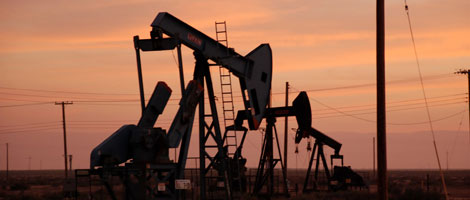How soon will U.S. oil production from wells in oil shale geologies peak?
It’s the big question for U.S. oil producers and for a global oil market swimming in excess inventory. As long as U.S. oil production continues to increase all of OPEC’s production cuts, intended to reduce that excess supply, aren’t going to get the job done. Since October 2016, U.S. crude oil production increased by more than one million barrels per day. That’s replaced more than two-thirds of what the Organization of Petroleum Exporting Countries cut from its production to prop up oil prices.
It’s a hard question to answer, as important as it is. We just don’t have much in the way of a historical record to let us predict how quickly production drops at a well tapping into the fractured layers of a tight oil reservoir. Or how quickly production might drop across an entire field.
One of the best bits of number crunching that I’ve seen recently as part of an effort to provide an answer comes from Erik Norland, senior economist at the CME Group. Looking at the decline in marginal productivity at U.S. wells, he has concluded that the peak is closer than the market thinks.
Norland comes to his conclusions from two bits of number crunching. First, he looks at rig count data from Baker Hughes that suggests the the number of operating oil rigs on land in the United States has plateaued at just over 750 in July. It takes about four months or so for a rig to begin producing significant amounts of oil. With 100 more rigs in operation today than four months ago, the plateau in U.S.oil production will follow on the plateau in the number of operating rigs by about four months. We can look to see U.S. oil production continue to rise for a few more months, Norland concludes, but production should plateau sometime this fall.
Second Norland looks at what he calls “the collapse in marginal rig productivity.” Each new rig going into operation recently is producing less oil than earlier rigs. “When the oil market began to rise last May, the energy industry deployed its best equipment to its most promising fields. Initially, each additional rig contributed 6,000 barrels of oil per day within four months to U.S. total production in excess of the depletion rate,” Norland writes. “But by February of this year, the marginal productivity of each new rig fell by about 75%; each new rig was adding only about 1,400 barrels per day in excess of the depletion rate. This reflects both the short-term nature of many of the shale plays, with fast rises and quick declines in oil production as well as the fact that the energy industry had been deploying less advanced equipment to less promising fields as much of the low hanging fruit had already been picked.”
So the last 100 new rigs added to the rig count over the last four months will add just 150,000 barrels a day to U.S.oil production. That would bring U.S. production to a peak of around 9.75 million barrels a day. That would match the high in U.S. oil production for summer of 2015.
Norland’s numbers are important but they do leave a couple of questions unanswered. Part of the reason that U.S.rig count has plateau is the sub-$50 a barrel price of oil. If, as U.S. production peaked, oil prices rose again, would U.S. producers again increase their rig counts? That might either push U.S. production back up again or at least change the trend in any decline in U.S. production.
Also at what point might it be worth it for U.S. producers to pony up for new, more efficient rigs and how fast is oil rig technology itself improving?
And Norland’s calculations are all working with average wells and average well production. We know that some oil shale regions are far more productive than others. That’s one of the reasons that producers are flocking to the Permian Basin. The trend in marginal productivity that Norland describes would seem to push that flight to more productive oil shale geologies even faster. Would that mean, again, a delay in the peak of U.S. production? Would it mean a more rapid depletion of those more productive oil shale formations? And would it produce a more rapid decline from any peak once the best areas are exploited to the degree possible.
All important questions for any investor holding an oil stock in a portfolio.


